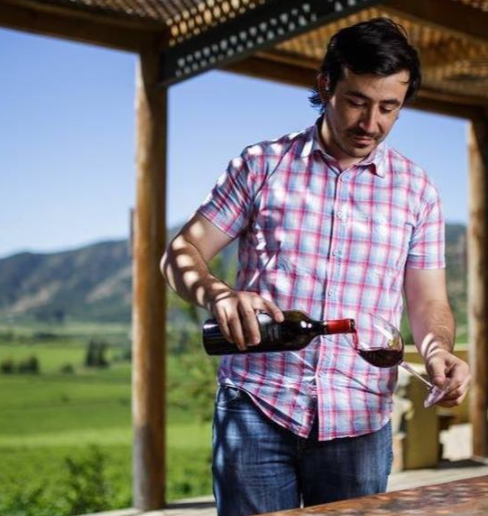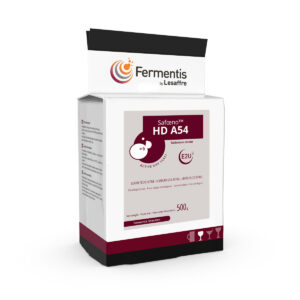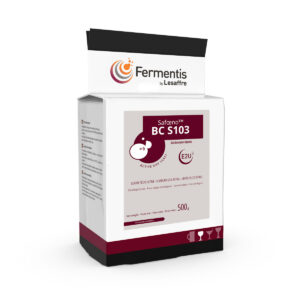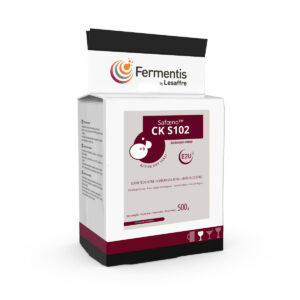Chile has 145,000 hectares of vineyards planted from parallel 27 to parallel 40 of South latitude. 70% of its production is located in the Maule Valley, Curicó and Colchagua Valley (from 250 km south of Santiago) and 89% of its vineyards are grown under irrigation.The 2021 season presented with higher rainfall than in 2020 at the time of veraison and with frosts during August to October that mainly affected varieties such as Chardonnay and Pinot noire, intended sparkling base wines production.
It was a year of moderate maximum temperatures, lower than the annual average in all regions, with cold and cloudy days that were reflected in a very slow maturation, also presenting some foci of Botrytis and necrosis of clusters due to nutritional disorder, and attacks of moth of the vine (Lobesia botrana) with greater affectations than the previous years.Despite these climatological and phytosanitary aspects, production was greater than that of the previous year by approximately 15%, reaching its average level in recent years.In general, the quality was good, with a good acidity balance and a lower alcohol content due to slow maturation. This also caused a better quality of tannins in red wines.
The white varieties, mainly Sauvignon blanc, were the most affected by excessive rainfall at the beginning of the harvest.Regarding reds, with Cabernet Sauvignon, which represents 30% of the grape production in Chile, very balanced wines were obtained, with good varietal typicity and great storage capacity. With Carmenere, the flagship variety that represents 10% of the production, it matured 30 days after the average date and wines of great concentration, color and structured tannins were also obtained.In general, even considering the complications during the harvest due to the rains, it was possible to make fresh wines with varietal typicity.
The wines from the southern part of the country stand out, where there is rainfed viticulture and there is a great development of non-traditional varieties such as Cinsault, Carignan, Moscateles and País grape, which are beginning to increase their presence in international markets.
Argentina has 215,000 Ha of vineyards distributed over an area of 3,500 km from North to South and from the Andes Mountains to the Atlantic Ocean.During 2021, 22 M tonnes of grapes were harvested and 16.4 M Hl of wine and 4.13 M Hl of must or grape juice were produced in its 863 registered wineries throughout the country.
The main producing province is Mendoza (Center West of the country), which represents 75% to 80% of the total national production.The main varieties of white grapes grown are Torrontés, Pedro Ximénez and Chardonnay and red Bonarda, Cabernet Sauvignon and Malbec as the flagship variety, among others.
The 2021 viticultural production was characterized by a dry winter with abundant snowfalls and a fresh spring, with higher rainfall than usual that made the vegetative cycle lengthen, with a harvest between the months of February to April, without phytosanitary problems.The climatic characteristics during the veraison to the ripening of the grapes contributed to a very healthy harvest with fresh, expressive wines and a good concentration of color, a high level of total polyphenols and a very good structure. White wines with good aromatic intensity and varietal typicality. The average alcohol of the wines of the year was 12.7 ° GL.
There is a growing tendency to obtain wines with great fruit expressiveness and less or no intervention with wood. The production and consumption of rosé wines also increases every year.
Brazil has two important wine-growing areas: the traditional Serra Gaucha, in the Southern State of Rio Grande do Sul, which represents 90% of the production of grapes, and Petrolinas, in the Northeast of Brazil, where up to two and a half harvests are reached.
Brazilian viticulture is highly variable depending on the climate and rainfall regime, which reaches 2000 mm per year, so in years with moderate rains like the current one, it is possible to reach 102 Mkg of wine grapes and about 403 MKg of grapes hybrids, of which 100 to 200 MKg are also destined for the production of wines.The presence of pathogens such as Botrytis and Oidium are normal in the region, so regular cures should be practiced.
The 2021 production was characterized by having had little rains during the flowering season (between September and November, depending on the area and height), which resulted in juices of good health and higher œnological quality.
As a result of the pandemic, the harvest window was shortened, which produced a congestion in the wineries, needing to receive a greater quantity of grapes in less time. However, a dry winter and spring and a hot summer, allowed to obtain average alcohols between 10.7 and 11 ° GL, in varieties such as Chardonnay and Pinot Noir, fundamentally for one of the main distinctive products of Brazil, which are its sparkling wines.The wines obtained in the season are characterized by their citrus and floral aromas, with fruity notes and large volume, making the 2021 vintage a great vintage in terms of quantity and quality obtained.
In Uruguay, there was a season with rainfall within the annual average, which allowed for a low incidence of pests until the beginning of the 2021 harvest. As of January, rainfall increased and some outbreaks of Botrytis and acid rot of the cluster appeared, but the incidence was moderate to low.
From February until the first week of April, grapes could be harvested with good health and generally acceptable quality. Grape production reached 99 MKg and wine production was 74 MLt.The main varieties cultivated are Tannat (12%), Moscatel de Hamburgo (9.5%), Ugni blanc (9.5%), Merlot and Cabernet, both with 11.5>%, giving rise to 38 MLt of wines red wines, 24 MLt of white wines, 7 MLt of rosé wines and the rest grape juices and other by-products.
The main producing area is in the surroundings of Montevideo, where the low average temperatures of the year (lowest in the last 10 years), allowed obtaining great aromatic quality in varieties such as Chardonnay, Sauvignon blanc and Albariño. The case of red wines, mainly the Tannat variety, produced aromatically very expressive wines, balanced in alcohol and acidity.
Peru has its wine-growing areas located on the southern coast of the country, from Lima to Tacna, although the department of Ica (360 km south of Lima), owns 70% of the vineyards and wineries of wine and Pisco. The great geographical diversity of the country allows to have vineyards in very varied areas, from deserts proper, to new settlements near the city of Cusco, at more than 2000 meters above sea level.
The grape harvest runs from January, for white varieties, to mid or late April for red and late varieties.The varieties of grapes grown are divided into Patrimoniales (Criolla, Quebranta, Mollar, Negra Criolla, Moscateles), mainly for the production of wines for the elaboration of Pisco (10 MLt produced in 2020), and Nobles (Malbec, Tannat, Petit Verdot, Tempranillo, among others).
Heritage varieties, traditionally grown with high production and high sugar content, are now being used to make still wines, less alcoholic (20 to 21 ° Bx), giving wines that are widely accepted in the markets and are rapidly expanding.The production of noble varieties has been increasing year after year, fundamentally the Malbec variety in Ica, where in some places close to 2000 meters above sea level and in the desert, high quality wines are obtained, highlighting the fruit and mineral character.
Bolivia concentrates its main vineyard production in the South West of the country, mainly in the department of Tarija (75%), between 1600 and 2600 meters above sea level.Currently there are 38 wine producing wineries and 14 Singanis distilleries (wine distillation, Muscat of Alexandria variety). In 2021, 14 MLt of wine and 4 MLt of Singani were produced.
The grape varieties grown are Muscat of Alexandria, Ugni blanc, Riesling and Sauvignon blanc for white wines, and Tannat, Syrah, Cabernet Sauvignon, Cabernet Franc and Malbec for reds.
The 2021 season presented a much more abundant rainfall than the annual average (550 to 600 mm), which led to a greater attack of cryptogamic diseases such as Downy mildew and Botrytis. However, the wines obtained were classified as normal, mainly Chardonnay and Riesling with outstanding aromatic expressions. In reds, the vintage was described as good.




















